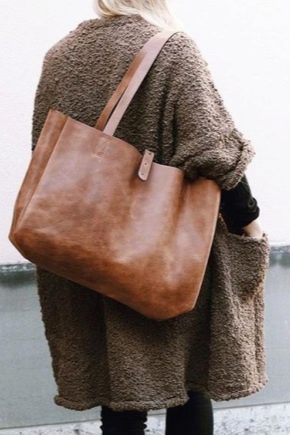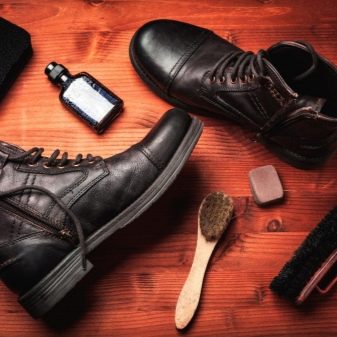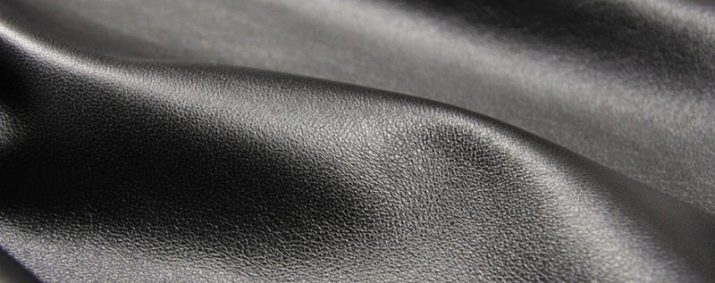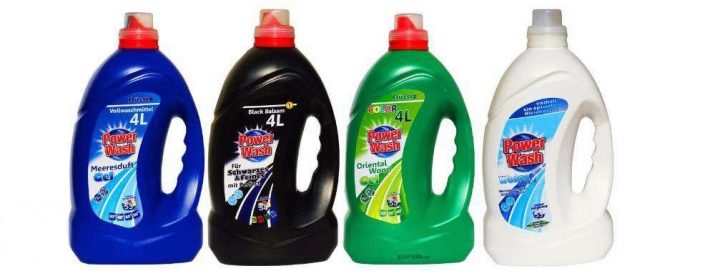How to clean the skin?

Animal skin is one of the most ancient types of material used for decoration and tailoring. And now leather products do not lose popularity. The question of the appearance of stains on such things is sometimes very acute. Dry cleaning is not always a convenient and affordable way out of the situation. Let's figure out what methods you can remove dirt from leather products.


Peculiarities
When you think about removing stains and washing things made of leather, it is worth considering that this is a capricious material that does not tolerate strong mechanical stress, friction, and a sharp change in temperature. Strong agents risk damaging the paint. High water temperature when washing will cause cracks and deformation.
An important aspect of leather care is maintaining the right level of natural fat on the material. If the products dry out the skin, then you need to restore the fat layer with the help of special formulations.
If you regularly take care of leather clothes and shoes, then many problems can be avoided. Products made of smooth material can be washed with a damp cloth, porous coatings can be cleaned with dry soft cloths. They will clean the dust and bring back the shine. For fleecy types of skin, there are special rubberized brushes.
With shoes, the issue is even simpler: there are a huge number of creams, paints, impregnations and deodorants on sale that allow you to keep your favorite things in great shape.


Varieties of material
Thanks to various methods of processing leather, many types of leather with different decorative and technical characteristics have appeared. Genuine leather is divided into:
- Smooth. Due to its most natural appearance and weak processing, leather is one of the most expensive. Raw materials are subject to the highest requirements.
- Aniline and semi-aniline leather is minimally processed to improve its quality. Previously, it was covered with aniline paints, but over time this method was abandoned due to its non-environmental nature.
- Nappa is a smooth material processed with paints and resins. It has dirt and moisture protective properties, therefore it is used in the manufacture of shoes.
- Laika. It is made from the skins of small cattle. The material is unusually soft, gloves are sewn from it.
- Embossed leather. The embossing method helps budget types of leather imitate chic and expensive (snakes, python, etc.)

- Lacquer. Its main feature is the coating with synthetic varnish to give the necessary decorative properties. Due to processing, the material loses its environmental friendliness and ability to breathe, but its spectacular appearance makes it very popular for the production of clothing, shoes and accessories.
- With polyurethane surface. Impressive processing and giving the material various shades and embossed patterns make it attractive to the fashion industry. Moisture-repellent properties are very much appreciated in the production of shoes.
- Suede leather. It is obtained by processing with animal fat.The delicate, velvety surface makes it one of the favorite types of leather for consumers, despite the high risk of deterioration from various factors.
- Nubuck is similar to suede in terms of decorative qualities, but due to grinding with a fine abrasive, it has an almost imperceptible pile. Its qualities are much worse than suede, it loses its attractive appearance much faster.

- Velours. The skins of valuable animals are not used for manufacturing. In the process of processing, the surfaces of the material are polished on both sides. Velor feels like suede, but in quality it is much inferior to it.
- The shagreen has a pimply surface. The roughness can be from nature or achieved by vegetable and quartz tanning.
- Parchment is a very ancient type of leather. Rawhide is used in the production of musical instruments, handmade decorative accessories, expensive books.
- Shora is made from thick types of skins by fat tanning. It is dense and plastic.
- Split. In the case of thick animal skins, they are sometimes divided into several layers with different uses. This saves material. The upper layers go to the production of shoes, velor is made from the lower ones.
- Pressed. It is difficult to call this species natural. All waste from leather production is pressed with polymer additives and cheap and not very high-quality leather materials are obtained.

Leatherette has long ceased to be associated with something cheap, low-quality and unprestigious due to the fact that recently they have learned to give it a very aesthetic look that can compete with its natural counterpart.
Types of artificial leather:
- microfiber Made from fibers coated with polyester. The material is breathable and moisture repellent. This is facilitated by the porosity of the coating.Microfiber products are washable.
- PVC leather. In this case, various additives and plasticizers are applied to the fibrous layer with polyester, which give the coating any look and properties. Decorative characteristics, long service life and ease of maintenance make PVC material in demand. But due to low environmental friendliness, it attracts mainly furniture manufacturers.
- PU leather (or polyurethane). This is a recent development consisting of a mix of genuine leather and other materials. The textile base is layered with a low-quality leather layer and covered with polyurethane. Environmentally, this composition is safe, breathable and resistant to various mechanical stress and temperature changes.
- eco-leather everyone is hearing now. Outerwear, furniture, bags and much more are made from it. This is a two-layer material, where the base is textiles or synthetic fibers, and the surface layer is made of polyurethane. This is a hypoallergenic, resistant to all sorts of influences material that perfectly imitates natural leather.

Washing machine: pros and cons
Leather items and leatherette products are best not washed at all. These materials do not like excess moisture and with frequent washing can crack, stretch and shed. If you decide to wash your clothes, it is better to do it by hand.
Various clothes are sewn from leather of different structure and density. For example, a leather raincoat or jacket is usually made of thick leather and is designed to be worn in the rain or even snow. It is best to take them to the dry cleaner if possible. But leather pants or a skirt have a softer texture, thinner skin. They can be washed under certain directions on the label.

If the product has icons that allow you to wash the item in a typewriter, then it is better to do so. To do this, choose the temperature no more than 35 degrees. At higher rates, the products are definitely deformed and lose their appearance. Spinning should also be turned off completely or set the regulator to the minimum number of revolutions (300-400). Washing gels are less likely to leave streaks. Machine drying must be turned off. Heating will cause cracks and scuffs.
It is better to dry the product either horizontally or on a hanger. Choose a room without excessive humidity, direct exposure to sunlight or strong heat.
This recommendation also applies to leather shoes. Washing it is not recommended. In addition to capricious leather or fragile leatherette, your favorite shoes may contain accessories and adhesives that are easily deformed by water, and even more so when scrolling in a drum. The same applies to hats - caps with tight visors, berets and hats.

Subtleties of cleaning
In order to remove any dirt from things or shoes at home, it is not necessary to wash the product completely. Enough to treat the problem area. When washing by hand, do not twist or wrinkle and rub the clothes too much, damaging the fibers of the leather or the substitute.
For machine washing, in addition to a special gel, a pre-diluted soap solution or baby shampoo without dyes is suitable. To maximize the water glass, after washing, you can leave the product for half an hour in the drum.
To remove a stain from any contamination, lay the item on the table and beat the lather of laundry soap. Using a tissue or sponge, apply it to the damaged area.Leave the composition on the material for 2-5 minutes and wipe dry with a clean cloth. In case this does not help or the stain remains from a specific substance, drastic measures are required.
Stubborn dirt will help eliminate table vinegar. It must be diluted with water in a ratio of 1 to 1. After that, with a cotton swab or sponge, apply the composition to the surface of the contamination. Try not to wet your skin too much. Remove any residue with a tissue.


The same method can be used by applying lemon juice. In most cases, alcohol or refined gasoline can handle the contamination. Apply them with a cotton pad on the skin and then remove the residue with a tissue.
Felt pens and markers are a real disaster for people who have small children. Both your clothes and your favorite leather sofa can suffer from them. You can wash them with any alcohol solution by wiping the stain with a cotton pad dipped in it. You can also use hairspray. Spray it on dirt and wipe with a clean cloth.
Ballpoint pen ink is more difficult to remove. The ink is absorbed into the skin. Mix alcohol and acetic acid and treat the stain with a Q-tip. The second effective method can be the use of adhesive tape or sticky tape. Glue it to the problem area and tear it off sharply. Remaining surface dirt can be removed with a regular eraser.
White upholstery and clothing should be cleaned very carefully, trying not to rub the stain. You can beat the chicken egg white and dilute it with milk. Apply the mixture to the contaminated area.


Permanent markers can be a big problem and can't be affected by alcohol.In this case, there is an extraordinary method - to resort to treatment with suntan lotion or repellant. Apply the product to the stain and wait 5 minutes. Then remove with a rag and dry the item properly.
Traces of grease or oil can be effectively removed with chalk powder. Sprinkle it on the stain and leave it for at least 20 hours. The fat will be absorbed into the chalk, and after that it remains only to clean off the product from the surface. This method is good for soiled nubuck or suede shoes. You can also use flour instead of chalk.
If the oil stain is fresh, it is worth trying to remove it with a sponge dipped in an aqueous solution of dishwashing liquid. Wipe the area with the product and wipe dry. For old stains, add a drop of ammonia to the soap solution. Another assistant can be white spirit and gasoline. In the case of working with them, it is better to lay the product from the inside with a clean white cloth so that excess solutions are absorbed into it.
Dark items should be treated with these products with more care than light-colored clothes and furniture upholstery. Poorly painted surface gasoline and white spirit can discolor and leave streaks.

Medicines, such as potassium permanganate, iodine, brilliant green, tend to eat into the tissue very strongly. Skin in this case is no exception. These substances leave bright and noticeable traces that immediately catch the eye. Lemon juice and alcohol can help here. It is recommended to clean clothes and furniture from iodine stains with nail polish remover. With cotton dipped in it, wipe the stain until it disappears.
On light leather products, you can get rid of stains in this way:
- Wipe the stain with lemon juice;
- Dilute the starch with water to a slurry and apply it to the contamination;
- Hold a little and remove the mixture with a napkin;
- Apply the lemon juice again, and then the cornstarch slurry. Do this until the stain disappears. Sofas and shoes can be processed in this way. Your favorite leather boots or sneakers will be clean and updated again.
Clothing in contact with human skin may become shiny over time. Black glossy marks may appear on the lining of shoes. And your favorite bag or backpack will shine with worn handles. To remove such contaminants from colored things, alcohol is well suited.

Treat the greasy area with a sponge dipped in it, and then wipe it with a cotton pad with lemon juice. After that, lubricate the product with glycerin. This method is also suitable for cleaning things made of artificial leather.
How to remove paint?
The simplest types of paints - watercolor and gouache, can be washed off with ordinary soapy water.
During the repair process, you are unlikely to wear leather items. But furniture must be protected from paint and plaster. Use protective film, covers and covers. In a car, it is also better to use special covers, at least when transporting contaminated items. The leather in the cabin, although it has special protective coatings, can suffer from various factors: animal claws, a seat belt rubbing against the seats.
The paint can be removed with a greasy cream or sunflower oil. You need to apply them on the stain, wait a bit and remove the remnants of the product with a clean cloth dipped in water. The remaining shine is removed with diluted dishwashing detergent. You can also use nail polish remover without acetone.

How to remove chewing gum?
Chewing gum accidentally stuck in vehicles or public places can severely damage the appearance of your clothes and ruin the interior of your car. Ways to remove it:
- Ice. Take ice cubes and use them to rub the gum on your jacket or seat. Excess water must be removed. The chewing gum should freeze as much as possible. If your clothing, such as a dress or trousers and leggings, allows you to put it in a bag in the freezer, then leave it there for several hours. After that, the gum can be gently scraped off using non-sharp objects: a plastic card or a spoon.
- Heating with a hair dryer. Heat the chewing gum that has ruined your favorite boots or sofa seat with a hair dryer until it becomes soft and gently scrape it off the surface.
- Saddle soap. It will help in the first two ways to cope with the remnants of pollution, and as a separate option. Using a soft brush, apply it to the problem area and rub in. Give the soap time to work, then scrape off the gum. Wipe the area with a clean damp cloth.

Helpful Hints
Pay attention to the following nuances:
- All stains should be removed fresh if possible. Dirt will not have time to saturate all layers of the skin.
- If you wash clothes or shoes in the washing machine, it is better to use a color fixer.
- Never try to scrape off the stain with a sharp blade or knife.
- After cleaning, be sure to treat things with a special leather care cream or vegetable oil and glycerin. The compositions soften the skin and give it a glossy shine.
- After being exposed to rain or snow, be sure to wipe things with a dry cloth so that they do not leave streaks.
- Drying leather products should always be away from heaters.
- For cleaning and caring for things and shoes made of leather, there is a whole arsenal of special compounds. Do not neglect them.
- Artificial materials are easier to use. Keep this in mind when buying leather items.



How to clean a leather jacket, see the following video.




























